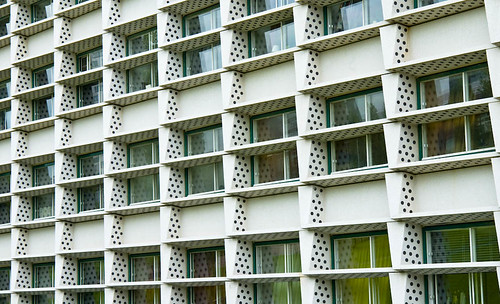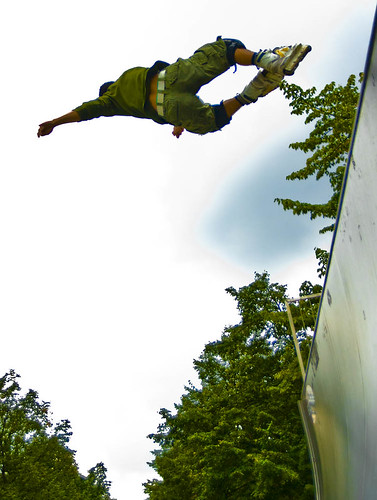Windmills and Clouds
Continuing with photos shot using the iPhone, here are some images from my latest trip to the Netherlands.
Labels: iPhone, Netherlands
endless possibilities in a world of practicalities...
Labels: iPhone, Netherlands
The Whale is located on the Islands of Borneo and Sporenburg at the Eastern Docklands in Amsterdam. This building is designed by Frits van Dongen and is a very prominent and recognizable architecture block in Amsterdam. Inside are 214 apartments, 1100 m2 of office and retail-space, a underground parking garage and a semi-public courtyard which flows through underneath.
More images and information here.
Labels: Architecture, Netherlands, Series

Hoop, Leifde, en Fortuin
The apartments of Hoop, Leifde en Fortuin, or Hope, Love and Fortune, is named after 3 windmills situated in the area in the 17th century. It is located on the north side of the Rietlanden district, an area which is a turning point between the city and the Eastern Docklands.
Labels: Architecture, Europe 2008, Netherlands, Series

One of the more interesting sites in Rotterdam, Netherlands, is the Skatepark occupying the midsection of Westblaak, a main thoroughfare in the city centre. The public skate facility opened in 2000 and includes 6700m2 comprising of 11 stainless steel obstacles for inline skating, skateboarding and BMX stunts. There is also a green area for relaxing and an on site restaurant.
The most important element of this park is the fact that it was the young skaters of the city who came up with the idea of the park. They also played a key role in the planning and design process of the facility by providing input and knowledge of their needs in such a space.
For more information about the park, please visit their website.
Labels: Design, Lifestyle, Netherlands
Entrepotbrug (Cruquius site)
In 1987, the Cruquius site was the first part of the Docklands to be redeveloped. The city started to develop the district where in the past, you found the cattle market, the slaughterhouse and the municipal customs depot. Other areas developed include the KNSM Island, Java island, Borneo-Sporenbrug, Rietlanden, Ijburg,and Oostelijke Handelskade and Veemkade.
I first visited Ijburg last June. Blog postings then included:
and the Nesciobrug.
More photos portraying the architecture of this area to follow..
To read more about the history and architecture of the Amsterdam Docklands, click here for a very comprehensive and interesting website.
Labels: Architecture, Design, Netherlands, Series
Labels: Colours, Netherlands, Netherlands Colours
Location and a view of the site from above. Photo by Erwyn van der Meer
Labels: Architecture, Europe 2008, Netherlands
Located nearby is another similar red bridge, but built for bikes, it is less steep. Both bridges were designed by the Rotterdam architecture bureau West 8.
Labels: Architecture, Bridges, Netherlands
Completed in 2001 and designed by Nicholas Grimshaw. The bridge is made of steel, with a length of 230 meters, a width of 38 meters, and a height of 26 meters. The suspended deck of the bridge serves to carry a traffic road and a light rail (tram) line. It is the main connection between IJburg and the A10 into the main city centre of Amsterdam.
The classic gables of Amsterdam’s canal houses inspired the arches and lateral gables and the wavy patterns refer to water. The segmented appearance is based on the skeleton of a crab. The shallowness of the water at the bridge site made it impossible to use floating cranes to lift the pre-assembled arches of the bridge into position during construction. The problem was solved by using pontoons and crawler cranes. [Source]
Labels: Architecture, Bridges, Netherlands
And in pink....
Labels: Architecture, Europe 2008, Netherlands
The art of visual heaviness versus physical lightness (Sculptures are made up of balls of newspaper put together with clear packaging tape)
Labels: Art, Netherlands
An evening spent helping a friend shop for a bed lead us to a stop-over at the Villa Arena Furniture Mall, just outside of Amsterdam.
Although I was amazed with the interior design, I was equally disgusted. I could not help but make some observations and question the mentality behind the construction of such a building:
How can this large a space be designed using mostly high cost materials and finishes, to be occupied only by high end furniture stores?
Where are all the shoppers on that Thursday night, the only evening the mall is opened until 21h00?
How does a place like this manage to survive?
How Amsterdam, a city as small as it is, can afford and justify such a wasted use of space purely for consumerism?
Has the Netherlands adopted the concept of the American Shopping Mall in an esthetically pleasing but yet unsuccessful manner?
Labels: Architecture, Design, Europe 2008, Netherlands